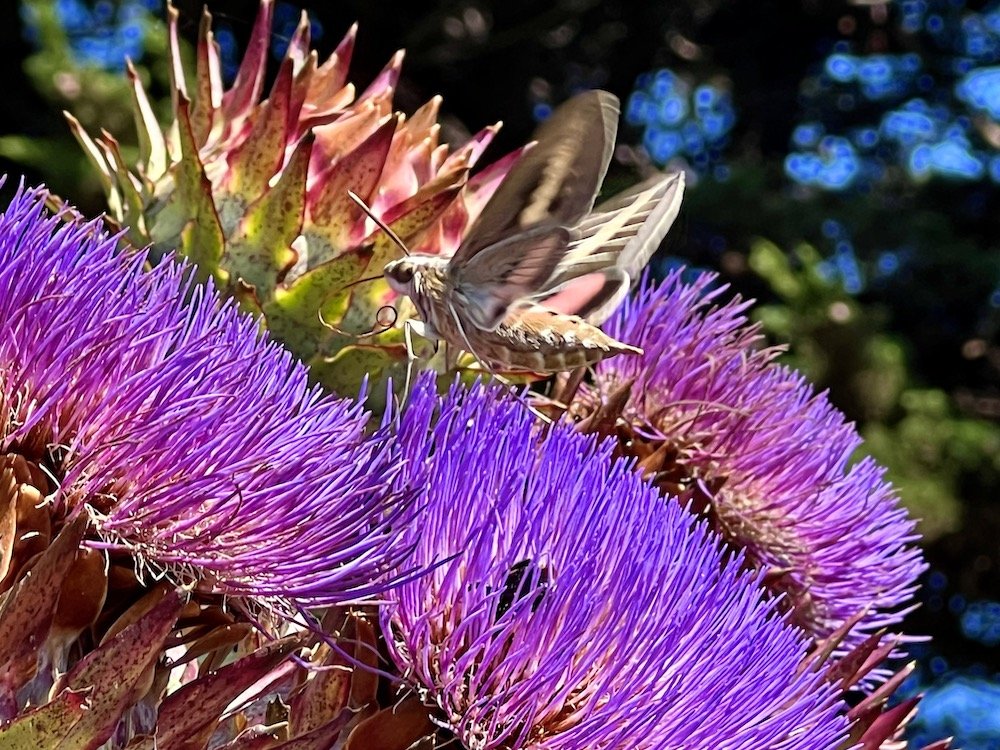Big Little Miracles
“Before us stood a cluster of different-length reeds that had been broken off by the force of the wind and weather over the course of seasons. As the air flowed past the reeds, those with open holes at the top were excited into oscillation, which created a great sound - a cross between a church organ and a colossal pan flute.”
Small miracles are quietly repairing the world. It's the salve of silent beauty that appears in the moments between things, the presence of the Presence in everyday mysteries continuously flowing around and between us.
This year, the miracles started when I announced to the Snail People and the Gopher Nation that I no longer wished to be adversaries. I told them there was enough for all of us to share, and promised I would not harm them. I invited them to eat what they pleased in most of the garden and requested that they please refrain from harming the fruit trees and vegetables. The snails became inexplicably sparse. The gophers and moles leave only an occasional mound of soil underfoot. They sometimes test the limits of our agreement, but not like before. The civility of our exchange is revelatory. What took me so long to engage in this way? Why are we humans so quick to attack?
Years ago, at a summer wedding in someone's home, the host said, You can tell how a marriage or a family is faring by observing the garden. His offhand remark had the texture of a great teaching; I think of it often.
Sometimes I wonder what my garden reveals about my relationship with this place I call home, and what the garden has to say about the turning of the seasons in this time of global transition. I wonder about what I notice and what I miss, and what both the beauty and the gaps reveal.
Foxes continue their voracious foraging and bobcats patrol the perimeter. This year, weasels appeared. They're a keystone species, and they eat rodents. They appear when the gophers and the mice become too numerous. Twice, a bear has climbed in over the fence. So far, s/he hasn't eaten anything, just played catch with the compost bins. I am hoping that, come November, the Red-shouldered Hawk will return to the railing and the pine branch, and the Cooper's Hawk will hunt from the eaves overlooking the sliver of meadow just west of the house. Is a natural balance of predator and prey possible in a backyard garden?
Thanks to the big rains last winter, the apple trees are laden with fruit; monarchs and swallowtails are suddenly all over the flowering thyme, and there's a new kind of bee that I don't recognize. Most amazing of all, hummingbird moths are everywhere, especially at dusk. They hover and feed like hummingbirds, though instead of beaks they have a long, curled tongue that extends deep into flowers, especially the artichoke thistles and the sages. Purple blossoms are particularly robust and compelling.
More than a dozen plants have appeared that were not here before. Try as I might, it becomes more and more impossible to 'landscape' anything, though not for lack of stubborn effort: I have repeatedly tried to group plants by color, texture, height, and the timing of blooms. The plants are completely uninterested in my preferences. Reluctantly at first, and now with curiosity and growing enthusiasm, I am learning to collaborate with the wisdom of seeds in choosing where they prefer to grow. Poppies and arugula sprout between flagstones. A birch tree grows from its moribund stump and is now nearly five feet tall.
Nature's signature is sometimes dramatic; often it's subtle. I once had a quilting teacher who said that 'men's underwear' patterns were important and necessary in order to help bold fabrics shine. That was in the days when department stores sold men's boxers in soft, pale colors and nondescript patterns that acted like white noise between the loud chorus of the bright patterns and hues of textiles that stood out. These changes in the garden are the opposite: things that are small, ephemeral, and quietly spectacular, are happening all the time, against a raucous background profusion. I suppose my progress as ally and partner can be measured by how quickly I notice what's happening, and by my willingness to yield to the wisdom of plants who understand far better than I what they need in order to thrive.
Last Saturday, I drove home after a week in Los Angeles. When I arrived it was early evening, not quite dusk. I brought in my stuff and went outside. As I opened the door, a great blue heron took flight from a high branch in the cypress tree across the yard. As it lifted from its perch, a single feather drifted down and landed at my feet. What a welcome, welcome home. Later, in the afterglow, the inevitable question arises: what is the offering that reciprocates such a moment? The inevitable answer follows: the response must be lived.
